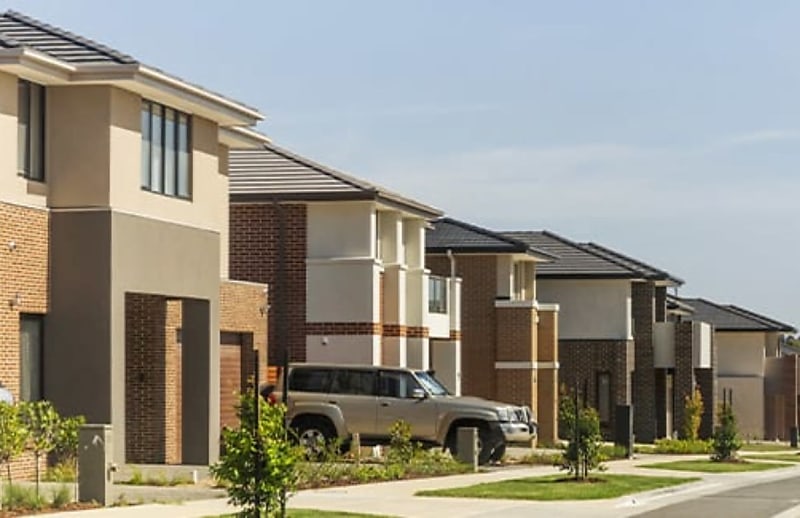The housing market is currently at a peak transition period where the bulk of loans with fixed rate facilities set up during the pandemic are due to expire, according to CoreLogic head of research Eliza Owen.
“The risk associated with the hundreds of thousands of fixed-rate loan expiries is that some borrowers will struggle to service their loans on the new, higher, variable rates,” said Ms Owen.
You’re out of free articles for this month
Average fixed rates with terms of three years or less bottomed out at 1.95 per cent in May 2021 for owner occupiers, while average variable rates for new owner occupier borrowers are now 5.66 per cent.
“For the average loan size in May of 2021 ($549,498) on a 30-year loan term, this represents an increase in monthly home loan repayments from $2,017 per month to $3,175, or an increase of almost 60 per cent,” said Ms Owen.
Ms Owen said while the numbers sound significant, the RBA’s August Statement of Monetary Policy outlined that the expiry of f fixed-rate terms peaked at just under 5.5 per cent of outstanding credit in the June quarter, and remain a low portion of outstanding credit month-to-month.
“This means a vast, and increasing majority of housing debt, is on variable rates. In contrast to fixed-rate mortgage holders, variable rate borrowers have already been exposed to the majority of cash rate rises,” she said.
“Based on average outstanding lending rates, an estimated 80 per cent of the 400-basis point increase as of June. While variable-rate mortgage holders have been feeling the pinch of rate rises and high cost of living pressures, official data suggests arrears remain in check and are still below pre-pandemic levels, and rising home values since February has likely only further reduced the incidence of loans in negative equity.”
The latest quarterly publication from APRA shows housing credit in arrears is extremely low at 1.2 per cent of outstanding debt, where ‘arrears’ means payments are late.
Non-performing credit, which is late payments of 90 days or more, made up 0.7 per cent of all mortgages in the March quarter of this year, while payments just starting to be late – between 30 and 89 days – were even less at 0.5 per cent.
“Although total housing repayments in arrears has increased from a recent low of 1.0 per cent in the September quarter of 2022, it remained below pre-pandemic levels at 1.6 per cent in the March quarter,” said Ms Owen.
Housing metrics seeing "some weakness"
However, housing metrics are starting to see some weakness, following a recovery trend through the first half of the year.
"The pace of increase in the CoreLogic Home Value Index has slowed from 1.1 per cent in June to 0.6 per cent in July, and the clearance rate to the end of July had also trended slightly lower, averaging 66.5 per cent compared to 71.3 per cent at the end of May,” said Ms Owen.
CoreLogic new listing counts increased 2.8 per cent, or by around 912 listings, through July.
“This was an unusual trend, because new listings have historically trended lower through July, amid a seasonal winter slowdown. For the past five years, new listings have moved -3.6% lower from June to July,” said Ms Owen.
“The trend has been especially notable in Sydney where new listings have moved 7.6 per cent higher through the month, and in Melbourne where new listings moved 8.6 per cent higher.”
The rise in new listings could be at least partially attributed to more motivated selling if home owners are struggling to keep up with rising mortgage repayments, she said.
“It could even be indicative of some homeowners selling based on foreseen issues with mortgage serviceability, with a sizable number of expiring fixed-term facilities toward the end of this year.”
Ms Owen noted that the addition of new listings to the market was not necessarily a sign that higher mortgage costs are creating forced selling conditions.
"There could be other reasons for an out-of-season uplift in new listings. As we have noted previously, new listings activity has often been led by a rise in home values and better selling conditions, with a every 1 per cent increase in home values annually translating to an average uplift of half a percent in new listings," she said.
"With home values rising for the past five months, this may be prompting more selling decisions that did not take place when the market was in decline last spring."
Overall, Ms Owen said official data on mortgage stress has not seen a blow out in arrears amid the expiry of low fixed-term loans.
“As home values rise, the risk of default also remains low. However, as what is likely to be the last of the RBA’s rate hikes is passed through to households with a mortgage, there may be a mild deterioration in housing market conditions if new listings decisions continue to rise," she said.
"The good news for mortgage holders is that this period of economic slowdown will also take the RBA closer to its long term inflation target, which could be the impetus for a reduction in the cash rate in the second half of 2024, as predicted by most major banks."

 Login
Login






